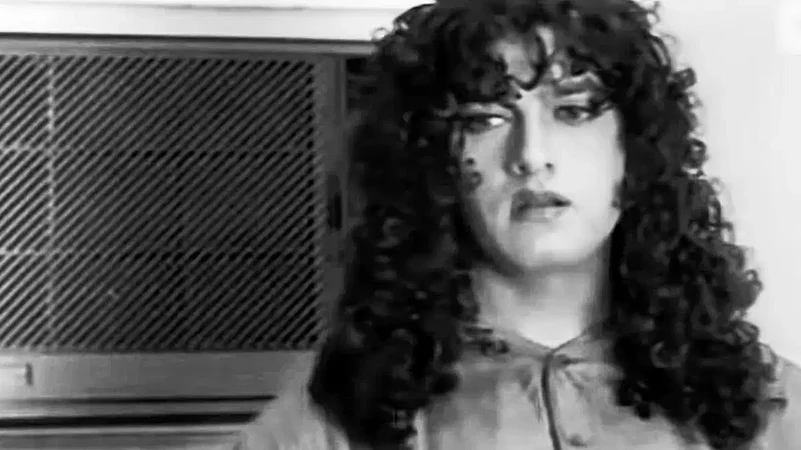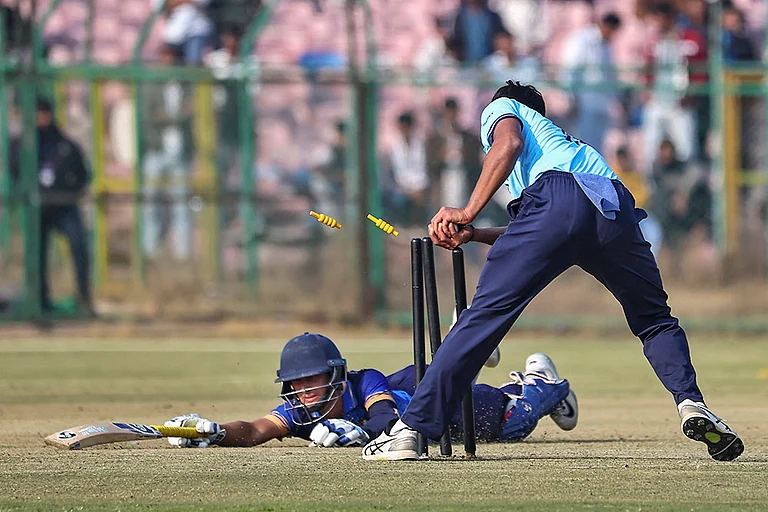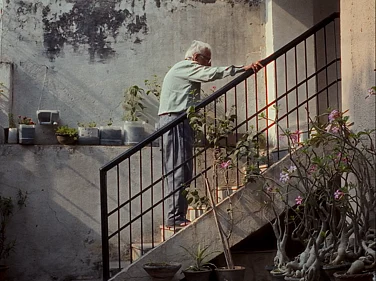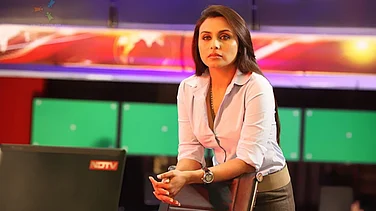The portrayal of transgender people in cinema can be analysed from three perspectives: as a representation of the community’s lived personal and social experiences; the specificities of physiological representation; and finally from the perspective of politics of representation. While the conversation around this subject has matured considerably across Hollywood and European cinema, Indian cinema, especially the mainstream genre, continues to have a tenuous and tension-filled relationship with the complexities of identity and sexuality of the transgender community.
For a long time, trans narratives were absent in popular cinema and the representation was limited to featuring characters from the hijra community in song sequences and comedy sequences. All time chartbusters like Tayyab Ali Pyar ka Dushman (Amar Akbar Anthony) and Saj Rahi Gali Meri Maa (Kunwara Baap) feature a group of hijras singing and dancing. The other popular practice, which can be considered as vaguely alluding to the existence of sexual minorities, was to feature male stars crossdressing. Many Hindi male leads from Rishi Kapoor (Rafoo Chakkar) to Amitabh Bachchan (Laawaris) to Amir Khan (Baazi) to Shah Rukh Khan (Chamatkar) have famously performed in drag for songs and other scenes. In both these representations, the idea was to exploit the perception of the physicality of the hijra community and the drags as emasculated for the sake of laughs. Sometimes, hijras were also used in crucial moments to play the god-sent saviour—remember Rallapalli’s cameo as the person who saves the protagonists’ child in Mani Ratnam’s Bombay? Or the wise commentator who reveals life’s truths or simply the well wisher offering blessings. This was perhaps a reflection of the popular belief in Indian society that hijras are god’s children and that their blessings are auspicious.
There were also crass and insensitive portrayals, again as a comedy device, in which an effeminate person is shown making passes at men using sexual innuendos. All these popular representations often blurred the lines between the different sexual identities across the LGBTQ spectrum and created misconceptions. It was hard to tell if the character is supposed to be a hijra or intersex or trans or gay. The popularity of film ensured that these cliches and misconceptions fed into the already poor understanding of the lives of sexual minorities in society. The gaudy saris and make-up, the singing, the dancing and the clapping became the enduring images of the cliches associated with the transgender community. Even before this imagery, the word ‘hijra’ was widely used in cinema to mark someone as emasculate. Remember the famous dialogue from Sholay where Kaalia says, “Thakur ne hijron ki fauj tayyar ki hai?”
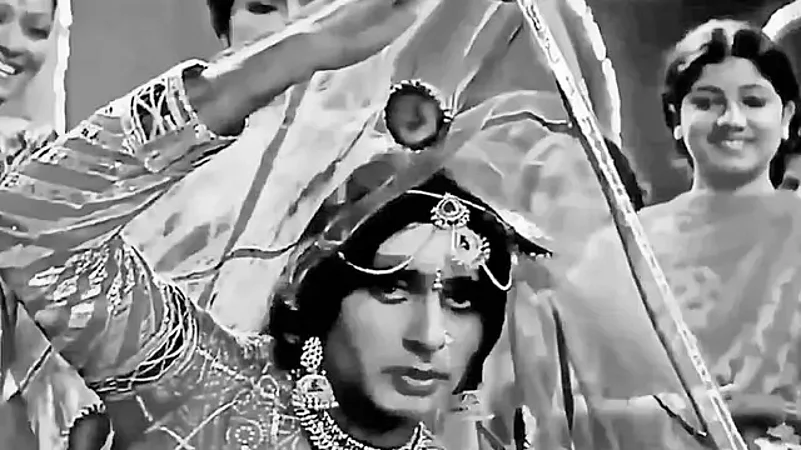
The cliches were first challenged by Mahesh Bhatt when he created prominent characters with substantial screen time in the 1990s. While in Sadak (1991), the eunuch (Sadashiv Amrapurkar) played the merciless pimp who announces to the heroine that he cannot do anything to her as he is neither a man nor a woman, Paresh Rawal played Tikku, the kind-hearted transgender who brings up the orphan protagonist against all odds in Tamanna (1997). Although there was a new possibility that the transgender person or the eunuch could be an important character in a popular film, they were still shown as outliers living on the fringes. For a while, courtesy of a few powerful performances, the negative characterisation of a transgender person became attractive to filmmakers. Sometimes, perceived transwoman make-up was used, like in Sangharsh (1999), to increase the danger quotient of the villain. Meanwhile, despite a few attempts to tell a wholesome story of the transgender experience—Darmiyaan (1997), Shabnam Mausi (2005)—the formulaic world of Bollywood continued its march with its inaccurate and cliched portrayals. Many Hindi films in the 1990s and 2000s, including super hits such as Raja Hindustani, featured ambiguous effeminate characters played by men and at times, a boisterous and manly character played by a woman, with exaggerated physical gestures and gaudy make-up, as the protagonist’s friend. This idea of using sexual minorities for the comedy track was pushed beyond acceptable boundaries in sex comedies like Masti (2004) where Ritesh Deshmukh’s character feels the need to clean his mouth after realising that Rakhee Sawant’s character, with whom he has just had a romantic rendezvous, is a transwoman.
From a physiological perspective, most of the portrayals we have discussed were male actors attempting to play women by employing simplistic external strategies such as exaggerated cliched ‘feminine’ gestures (walking styles, hand and body movements), modified voices, gaudy costumes and over-the-top make-up. Thematically, in the rare cases where there was a prominent transgender character, the narrative foregrounded the pathos of the character’s social experience and in most cases, attributed it to fate.
In recent times, there has been tremendous progress in the public discourse around issues concerning identity and sexuality of the transgender community. Has this affected and enhanced the cinematic representation? A critical examination of three recent acclaimed movies might help us answer this question.
The 2015 Kannada film Naanu Avanalla Avalu won two national awards including the Best Actor for the Late Sanchari Vijay for his performance as Madesha who transitions to Vidya. This film was based on the autobiographical work, I am Vidya, of Living Smile Vidya. The realistic treatment makes us witness to the struggles of Vidya as she battles many societal hurdles—familial and otherwise—to claim her identity. The rural and lower middle class setting of Vidya’s story brings to light new aspects of the transgender experience such as the practice of illegal sex reassignment surgery or ‘nirwaana’. But even here, the much-appreciated performance of Sanchari Vijay seems to rely on stereotypical physical qualities such as exaggerated gestures. One doesn’t know if this is true to Vidya’s physicality. Also, in the spirit of politics of representation, why did the makers not cast Vidya herself considering that she is also an established actor in real life?
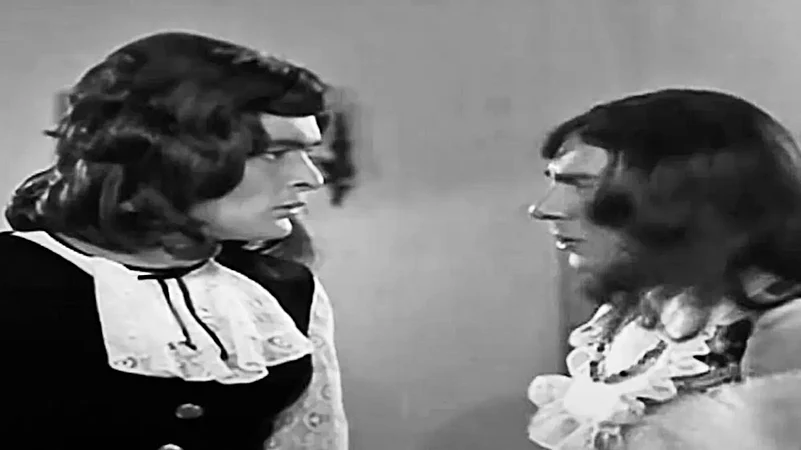
Then there is Super Deluxe (2019), Thiagarajan Kumararaja’s successful dark comedy. One of the three parallel narratives in the film deals with the story of a transwoman called Shilpa who has returned home after seven years of exile to see her son. Set in a lower-middle-class joint family in the underbelly of a city, the artistically constructed mise-en-scène reveals some ambivalent and some surprisingly empathetic responses to Manickyam’s transition to Shilpa from her family members. In a revealing scene, we watch Jyothi (Manickyam’s wife) staring while Shilpa meticulously wraps a flower-printed sari around her body and wears a wig to cover her bald head. Shilpa quietly asks the stunned Jyothi, “Do I look pretty? I should look good in front of my son’s friends.” Most delightfully, the son’s unconditional acceptance of his father’s choices showcases the magical possibilities of human life. Vijay Sethupathi’s restrained performance, sans unnecessary exaggeration and voice changes, albeit with the gaudy saris and the colourful make-up, lends authenticity to the character. The structuring of Shilpa’s story as one of the three in a larger narrative also avoids undue attention and gives it a sense of equality with the human experiences in the other two stories. In contrast to Naanu Avanalla Avalu which works as an educational film about the struggles of the transgender community for social acceptance, Shilpa’s story comes across as a more layered humanistic portrayal.
While these two examples from South India showcase new narratives emerging from experiences which might be relatable to many of the transgender people we see struggling for dignity and respect, Bollywood’s new offering Chandigarh Kare Aashiqui (2021) attempts to debunk the social taboos around the transgender experience with a typical over-the-top approach. Mannu, played by Ayushman Khurana, is a gym owner and an aspiring powerlifter. He falls in love with Zumba teacher Maanvi played by Vaani Kapoor only to learn that she is a transwoman. The audience is expected to go through the learning curve along with the hero as he visits doctors, reads up on the internet and consults other transwomen to understand how it is not wrong to fall in love with a transitioned woman. Despite its best intentions, the narrative comes across as another Bollywood social drama which needs a male star as the lead communicator of its message. It’s no surprise then that the climax is about Mannu dramatically winning the powerlifting competition. What Chandigarh Kare Aashiqui does differently is that it casts a leading female actor as the transwoman thus departing from the existing practice of casting a male actor. This breaks the prevailing cinematic stereotypes regarding the physicality of the transitioned woman. But then, could they have cast a real-life transwoman actor instead? After all, there are a considerable number of trans actors looking for work in the Mumbai film industry. The film also casts the transgender issue within the sanitised upper-class milieu thus saying out loud that it is not just a social issue concerning the Vidyas and Shilpas of the lower socio-economic class.
Interestingly, the majority of Indian cinema’s transgender narratives feature stories of transition of people born as male to a woman. Is this because the transman experience is considered less acceptable to society? Or because there are genuinely very few stories of transmen available in the public domain? Despite a few refreshing narratives and a general gradual progress in depicting same sex love, most of mainstream Indian cinema still sees the transgender experience as a social issue to be resolved and hasn’t yet begun to imagine trans lives as human lives. And unfortunately, as films like Laxmii (2020), which exploits the transwoman imagery to create a violent horror narrative show, insensitive portrayals are still not a thing of the past despite the large amount of freely available literature on the subject today. Looking towards the future, one wonders if there will be popular films which don’t have to be marketed as progressive narratives about transgender lives. Will the thematic concerns move beyond social messaging? How about portraying trans people with all their human complexities and contradictions? Until this happens, the audience will have to continue to look towards the alternative circuit such as the growing number of Queer film festivals across the country where innovative experiments such as the subtle and complicated Kannada feature Chronicles of Hari (2016) can be discovered.
In tune with the times we live in, OTT might lead the way for the much-needed shift in popular cinematic portrayal of transgender. There are already signs of it with the character of Meher played by the real-life transgender Trinetra Haldar Gummaraju in Made in Heaven Season 2.
(Views expressed are personal)
Basav Biradar is a writer, researcher and documentary filmmaker
(This appeared in the print as 'Lives On The Fringes')






